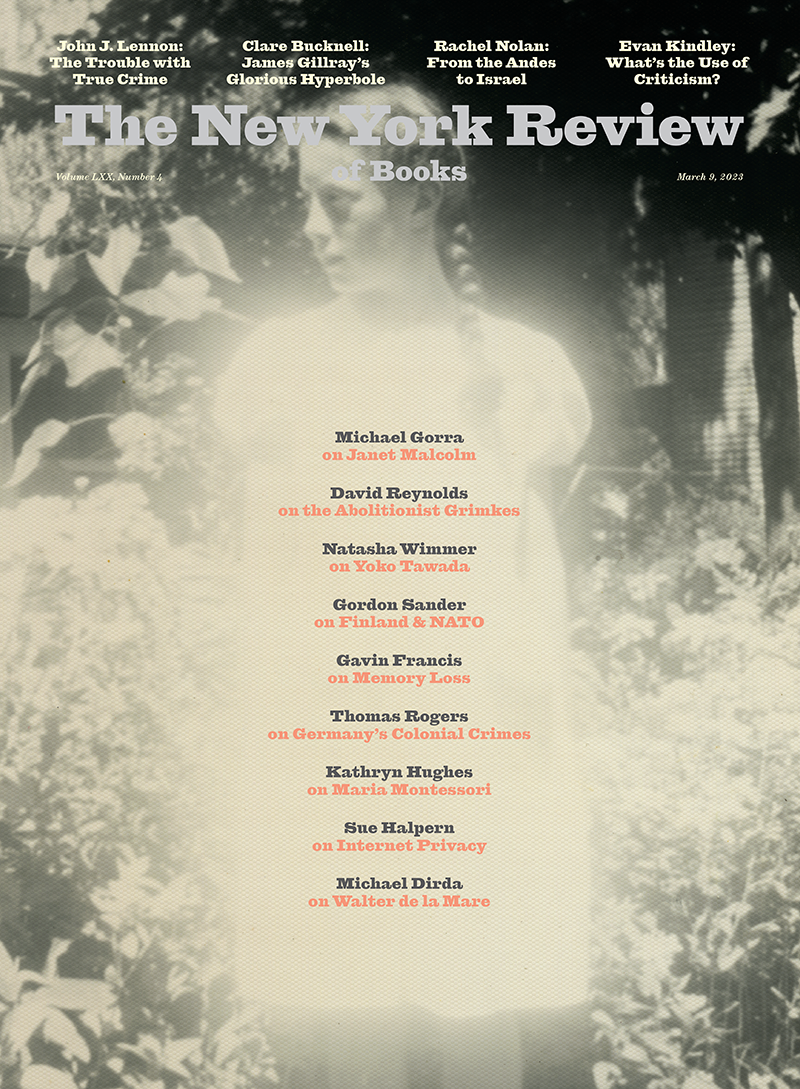In response to:
Feinting Spells from the January 19, 2023 issue
To the Editors:
Susan Tallman, in her review of “Cubism and the Trompe l’Oeil Tradition” [NYR, January 19], makes reference to William Harnett and the late entry of American trompe l’oeil painting in the nineteenth century. I would like Tallman to make note of a painting in the American collection at the Philadelphia Museum of Art by the eighteenth-century artist Charles Willson Peale: Staircase Group (Portrait of Raphaelle Peale and Titian Ramsay Peale I) (1795). The painting is eighty-nine inches high by thirty-nine inches wide, almost life-size. The 1995 edition of Philadelphia Museum of Art: Handbook of the Collections describes the painting:
On an unusually large canvas, he made one of his rare full-length portraits, showing two of his sons on an enclosed spiral staircase. Its high degree of detail and finish shows that the painting was clearly intended to be a trompe l’oeil “deception.” …To enhance the illusion, he installed the painting within a doorframe in his studio, with a real step in front. Rembrandt Peale, another son, recalled that his father’s friend George Washington, misled by Peale’s artifice, tipped his hat and greeted the two young men as he walked by.
American art was not such an “artistically unsophisticated” backwater as nineteenth-century Europeans believed.
Ruth Rosenwasser
Key Biscayne, Florida
Susan Tallman replies:
I thank Ruth Rosenwasser for her mention of the wonderful Peale double portrait in Philadelphia. Just to clarify—my comment had specifically to do with the particular mode of still-life trompe l’oeil connecting seventeenth-century Europe, nineteenth-century America, and Paris in the 1910s. Sadly, I suspect that Peale’s ingenious pictorial game would have struck most European cognoscenti as a demonstration, rather than refutation, of American naiveté. Their loss.
This Issue
March 9, 2023
Peddling Darkness
Having the Last Word
Private Eyes


